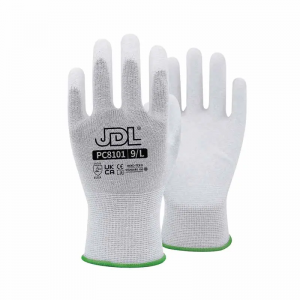As industries increasingly focus on safety and efficiency in their operations, electrostatic protection gloves are becoming essential personal protective equipment (PPE) in various industries including electronics, pharmaceuticals and manufacturing. These specialized gloves are designed to protect against electrostatic discharge (ESD), which can damage sensitive electronic components and create safety risks. Driven by technological advances, growing awareness of ESD risks, and increasing regulatory requirements, electrostatic protective gloves have a bright future.
One of the major factors driving the demand for electrostatic protection gloves is the rapid growth of the electronics industry. As electronic devices and components proliferate, the need for effective ESD protection becomes increasingly urgent. Static electricity can cause irreversible damage to microchips and circuit boards, resulting in costly production losses. As manufacturers strive to maintain high quality standards, the use of anti-static gloves is becoming standard practice in clean rooms and assembly lines.
Technological innovations are significantly enhancing the performance of electrostatic protective gloves. Manufacturers are investing in advanced materials to provide superior conductivity and durability while ensuring comfort and dexterity. The new glove design incorporates features such as breathable fabric, an ergonomic fit and enhanced grip, making it suitable for extended use in demanding environments. Additionally, the integration of smart technologies, such as embedded sensors for monitoring static electricity levels, is becoming increasingly popular, allowing real-time feedback on ESD risks.
Growing emphasis on workplace safety and compliance with industry regulations is another key driver for the electrostatic protective gloves market. As organizations face tighter ESD control guidelines, the need for high-quality protective equipment continues to increase. Complying with standards such as ANSI/ESD S20.20 and IEC 61340 is critical for companies looking to reduce risk and protect assets.
In addition, the expansion of industries such as automotive, aerospace, and healthcare has also created new opportunities for electrostatic protective gloves. As these industries rely more and more on electronic components, the need for effective ESD protection becomes more apparent.
To sum up, the development prospects of electrostatic protective gloves are bright, driven by growing demand in the electronics industry, technological advancements, and concerns about workplace safety. As industries continue to prioritize ESD control and worker protection, ESD gloves will play a vital role in ensuring safe and efficient operations across industries.

Post time: Oct-25-2024


